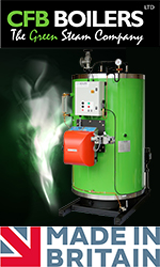High Speed High Volume Production Innovation – It’s time for a rethink.
SK Wiring Products Ltd is one of the World’s premier Thermocouple cable manufacturing companies; supplying the temperature measurement market globally. Our mission is to be the primary choice supplier for the Thermocouple, RTD and specialist cable products industries. SK’s R+D department is constantly looking for ways to break with the traditional mentality of cable makers and to bring new high speed high output machinery into our production environment; benefiting our customer base with improved delivery times and higher quality products
Low output from glass lapping machines has been an issue for a number of years, although the accepted wisdom is that there are physical limits to the speed with which you can rotate glass fibre yarns, the knowledge behind that accepted wisdom is dated. SK decided to look at the problem using new knowledge and technology.
The first consideration to increasing the rotational speed of the lapping head, which is the first step to increased throughput, was the significantly increased g loadings that the fibre would be subjected to. As Weight is a mathematical equation in relation to Mass X g (Force acceleration) it is easy to see how even a small increase in rotational speed, and so a small increase in g loadings can equate to a large increase in an objects weight. There had been no real consideration given in design of these machines to ensuring that the g loadings on the fibre runs down the fibres length and doesn’t cut across it at an angle. (See Fig.1) Glass Fibre does not like going round bends under load, but is much happier if the loading is spread along its length. It was apparent that in order to speed up the machine the first step was to ensure that the machine design reduced or eliminated high spot loadings on the fibre.
The most apparent and simplest way was to “tilt” the feed bobbin to an angle that would all but eliminate the spot loadings, however the reality was that the running angle of the feed bobbin could not operate at its optimum angle to reduce spot loadings which would be horizontal to the wire being covered, as the wire is fed through the machine so the glass is pulled in an upward direction – essential to achieve an even layer of glass around the wire – this upward pull created an almost identical spot loading problem to keeping the feed bobbin in the vertical plain. Determining the “Best Fit” angle to tilt the feed bobbin at became a consideration between the desired running speed of the machine and the types and thickness of the glass being used. Larger glass sizes allow for faster running speeds due to the higher rate of coverage, but increase the OD of the wire being covered outside of size specifications, smaller glass diameters needed to be used for these jobs, but that led to a different optimum angle of tilt. A variable tilt angle for the feed head was considered but discounted as it would increase the operator work load, and leave the door wide open to operator generated mistakes.
A best fit angle was calculated, and the glass feed heads fitted at this fixed angle. (See Fig 2) Whilst this angle gave the widest range of operation with the minimum of spot loadings on the glass it still left some lateral forces being applied to the glass, which in some cases exceeded the Glass strength and led to breaks. The simple solution was an adjustable forming die, which both the wire and the glass are fed through, adjusting the height artificially forces the glass to run in a manner that pushed the g loads down the length of the glass and all but eliminated the higher spot loadings by keeping the glass running straight and true.
Glass break detection was the next challenge – The traditional method used was a contact micro switch – but the speed of the rotating head would hit the glass break switch with such force as to either explode the micro switch or explode the glass carrier, a system of contactless break detection was used with the utilization of optical devices rather than mechanical devices.
After 12 months of extensive R+D the production version of the machine was manufactured and a series of “In-Production” line speed tests carried out. The end result was a 10 fold increase in through put, higher quality coverage of the wire and a machine that required far less operator input than the traditional Glass Fibre lapping equipment.
So just because it’s always been done one way, doesn’t mean that it must always be done that way, when specifying new equipment take a moment to see if a small change can make a big difference.
WEB : www.skwiring.co.uk
Email : sales@skwiring.co.uk
Tel : 0161 320 9237
Fax : 0161 320 3663






























































































































